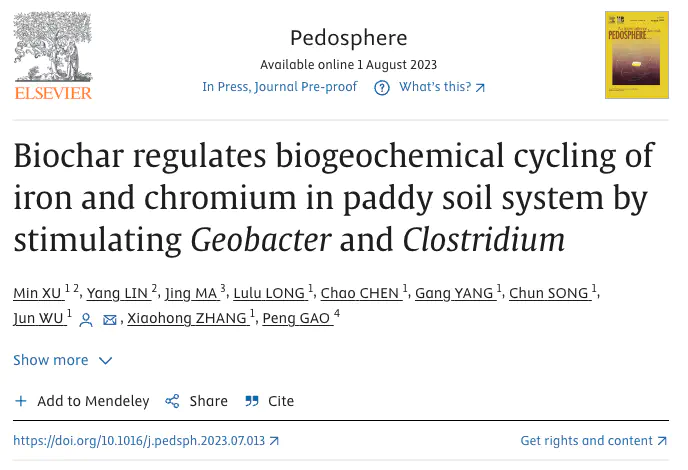Biochar-bacteria partnership based on microbially induced calcite precipitation improves Cd immobilization and soil function

Abstract
In rice systems, microbial reduction of iron (Fe) has been recognized as a crucial biogeochemical process that regulates Fe and chromium (Cr) translocation; however, the underlying processes are unknown. Here, maize straw-biochar was applied at 1% (w/w) to paddy soil spiked with 300 mg kg-1 Cr under two phosphorus (P) levels (0 or 90 mg kg-1), aiming to investigate the impact of biochar on the biochemical cycle of Fe and Cr and their toxicity to rice. The key microbial groups affecting Fe dissimilatory reduction and their environmental drivers were explored. Biochar inhibited Cr uptake of roots by 36%, owing to a higher iron plaque (IP) level on the rice root surface. According to correlation analysis, pore water-Fe concentration was strongly linked to the abundances of Geobacter (r = 0.81~0.94, p < 0.05) and Clostridium (r = 0.83~0.95, p < 0.05), indicating that Geobacter and Clostridium played essential roles in Fe reduction. Redundancy analysis showed that labile carbon and pore water P concentrations were the key determinants influencing Fe-reducing bacterial abundances, accounting for 42% and 32% of their variation in community composition, respectively. Besides, biochar increased Fe and P in the root cell wall, which retained more Cr. Overall, Cr stress in rice under biochar treatment was relieved through increasing IP formation and altering subcellular distribution. These mechanistic insights have important implications for reducing Cr uptake by rice.